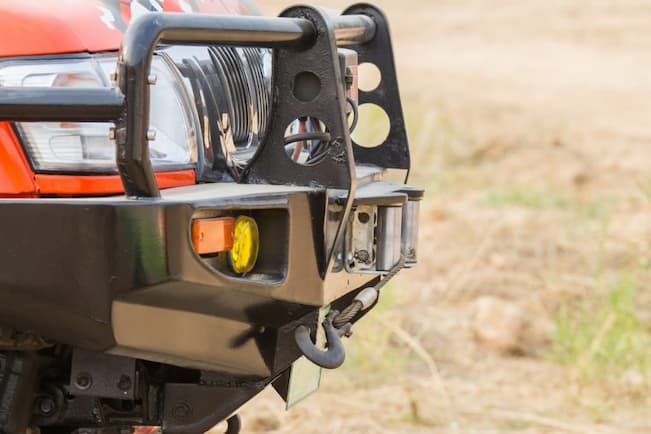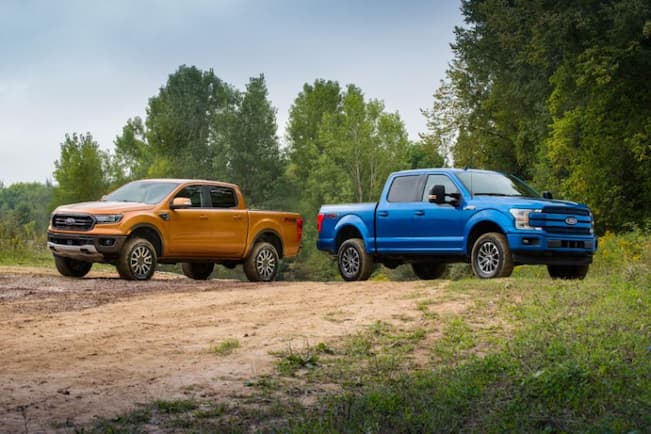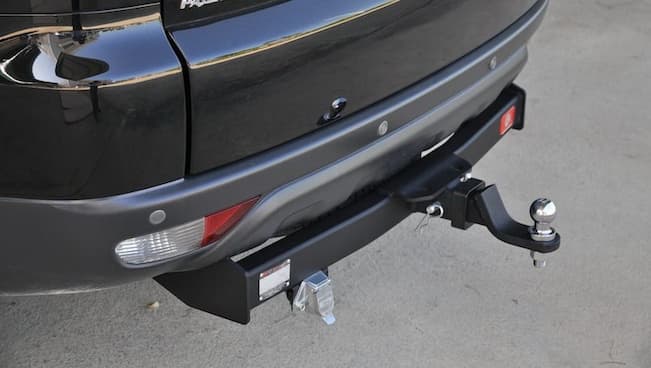Leaving the tarmac for the ultimate off-roading experience isn’t an opportunity that is granted to many Aussies. Only a lucky few get to indulge in the heart of the country and all its eccentricity and beauty. Going prepared will determine if this is going to be something you’ll remember for a lifetime, or an unfolding nightmare with dire consequences. Risks and dangers lurk in every corner, and you’ll be far from the nearest town if things turn sour.
Planning your route is essential. You’ll be aware of the terrain you’re facing and the weather changes that will put a strain on both vehicles and drivers. Complete novices won’t find this amusing, but anyone with more than a few off-roading and trail miles under their belt definitely will. The challenge is all part of the fun. If you’ve honed your 4WD driving skills over the years, then there’s the itch to see what else this country has to offer. All that remains is getting the supplies needed for the duration of the journey, and getting your 4WD or ute up to sorts. And an essential selection of 4×4 offroad parts will warrant you to get home in one piece and live to tell all about it.
What follows is a basic list of off-road parts that you’ll want on your four-wheel drive when planning to hit the red soils:
Bull Bars

To take the rough with the smooth and come out unscathed your rig needs to be fitted with the necessary front-end protection. And this is embodied in a full, triple hoop bull bar covering the larger part of the car. Rocks, stumps and debris will be easily shrugged off, and there’ll be no evident damage if you hit our beloved wildlife at full speed. Tragic as it seems, kangaroos or other animals can leave you in the middle of nowhere, and stuck with an engine begging for mercy. The first thing to go is the radiator, and you’ll be in limp mode before you know it, until the car carks it from overheating.
Bull bars have enough spread that they allow for other safety additions. Side brush bars are a good match for shrubs and branches looking to scratch side panels, and bash plates do wonders in keeping steering and suspension in one piece. Bull bars also provide refuge for winches to get you out of tight spots and nice additions like an extra set of lights for more visibility when the sun sets. Look for bull bars in high-grade steel with corrosion coatings, tight welds and compatibility with your vehicle.
Snorkels

Contrary to common belief, snorkels are not used solely to safely wade through creeks at streams during storm seasons. This is only one of their purposes. Possibly more important is the ability to filter out dust and debris (which is in no short supply when off-roading) and can clog filters and damage engines. Look for snorkels in either reinforced plastics that hold well against corrosion and heat, or go for one in a full metal jacket and watch it last a lifetime. This of course is if fitted right. Mounting kits come with all snorkels, and a pro fir is the best insurance it works.
Canopies
Canopies and utes go like hands and gloves. You’ll find one with every tradie too. For off-roading, a canopy helps you increase overall storage, offers a sturdy foundation to keep gear safe and protected from weather, and internal and external accessories go a long way in making for a more pleasant journey. They can be fitted with sliding fridges and pack everything, including the kitchen sink. Ovens, jerry can holders, and gas canisters are just some of the luxuries to keep things civil away from home. You can fit a roof rack, and pitch a rooftop tent or roll out an awning from welded rails.
Suspension Lift Kits and Matching Tyres

To tackle uneven terrain, you’ll need mods to the stock suspension. A lift kit adds a few centimetres of ground clearance, stiffens up the ride and allows for better wheel articulation meaning better road holding and stability. Increased approach and departure angles mean you won’t be scraping off the exhaust or underbody in tighter spaces. With the chassis higher, there’s also the option for bigger wheels. Here you should fit tyres with off-road treads that bite more into the ground to give you better traction and grip.
Recovery Gear
If the added height isn’t enough and you’ve misjudged the road, then recovery gear is what will get you out of ruts. Winches fitted to bull bars can pull your or a mate’s 4WD to safety. Those with synthetic rope are generally easier and safer to use, and in combination with a snatch block effectively doubles pulling power. Recovery points bolted to the chassis will provide access for straps and shackles and additions like hitches fitted to the rear offer more options when recovering vehicles at angles. When you’re deep down, clear mud or sand around tyres with a shovel, get sizable recovery tracks as close to the wheels as possible, and let the journey begin. If this doesn’t work, then your remaining option would be a high-lift jack. These are extremely powerful but dangerous pieces of equipment, so always take care and follow guidelines. Look for recovery gear that is rated for at least double your vehicle’s weight when fully loaded.
Roof Racks
This is an obvious one for more than one reason. Racks effectively tie down any large pieces of gear that won’t fit or are just too dirty for the boot, tray or tub. When off-roading, these 4×4 off-road parts will carry all the extra goodies needed for the trip. Different configurations, designs and sizes mean space can be optioned just the way you like. Platforms are good for longer and heavier stuff, while cages accommodate things like solar panels, that additional wheel or larger tents and camping furniture. Look for lightweight aluminium racks that are compatible with your ute or 4WD and come with the right mounting gear. There are also specifically off-road racks designed to reduce vibrations and handle the tougher conditions that much better.
LEDs
Pitch darkness is what you’re facing when the sun sets. And this will be difficult, to say the least, to get anywhere with the stock headlights. It also becomes risky. A bespoke set of driving lights mounted near the grille or on the bull bar or rack will light up your way no matter the conditions (haze, dust and flying debris) or weather. LED light bars attached higher up have both flood and spot beams to shine both at a distance and wider angles to the sides of the vehicle. Go for lights with quality metal housings, LED chips from respected lighting brands, and insulated wiring harnesses for easy installation.
Tow Bars

If you’ve got anything that you need to tow, like an off-roader trailer, your rig needs to be fitted with a rated tow bar and the right accessories (tow bar tongues and hitches) for the terrain. Chains will secure the trailer to the vehicle and electric brake lines help in better braking on more demanding turf.
Off-Roading Trailers
Smaller trailers with an off-road build are a good choice if you plan a few nights in the bush without pitching a tent. The comfort levels are much higher, and trailers can be fitted with luxuries that otherwise you’ll be doing without. Suspension here is beefed up, bigger wheels are more suited for rocks, ruts and deeper waterbeds, and longer drawbars work better with pronounced undulations without the risk of detaching. If you have the cash to burn, this is a nice though not wholly justified inclusion to your off-roading setup.
Camping Gear
Space is limited, so pack just the essentials. Waterproof tents, snug sleeping bags, and basic furniture should cover the basics. Awnings provide shade and awning mats a little comfort underfoot. Don’t forget basic cooking equipment and eating utensils to prep up a hearty meal, plenty of water, basic sanitary, and clothing fitting for the setting. Ovens and fridges can work off the car’s12v socket but have a spare battery just in case. If you can make the stretch go for the simplest solar setup with panels and batteries for more convenience. Camping knives will prove worthy on more occasions and the same can be said of first aid gear. Remember to pack light without going overboard.


























